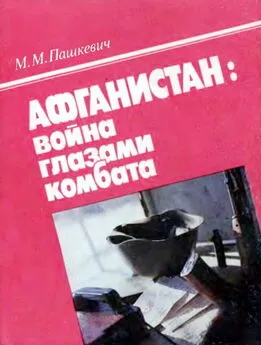Михаил Супотницкий - Биологическая война (Часть 3)
- Название:Биологическая война (Часть 3)
- Автор:
- Жанр:
- Издательство:Кафедра, Русская панорама
- Год:2013
- Город:Москва
- ISBN:978-5-93165-328-0
- Рейтинг:
- Избранное:Добавить в избранное
-
Отзывы:
-
Ваша оценка:
Михаил Супотницкий - Биологическая война (Часть 3) краткое содержание
Часть 3. Частная неправильная эпидемиология.
Биологическая война (Часть 3) - читать онлайн бесплатно полную версию (весь текст целиком)
Интервал:
Закладка:
Reed D. S., Lackemeyer M. G., Garza N. L. et al. Severe encephalitis in Cynomolgus macaques exposed to aerosolized Eastern equine encephalitis virus // J. Infect. Dis. 2007. V. 196. P. 441–450.
Reed D. S., Larsen T, Sullivan L. J. et al. Aerosol exposure to Western equine encephalitis virus causes fever and encephalitis in Cynomolgus macaques // J. Infect. Dis. 2005. V. 192. P. 1173—1182
Reed D. S., Lind C. M, Sullivan L. J. et al. Aerosol infection of cynomolgus macaques with enzootic strains of Venezuelan equine encephalitis // J. Intect Dis. 2004. V. 189. P. 1013–1017.
Reed K. D., Melski J. W., Graham М. B. et al. The detection of monkeypox in humans in the western hemisphere // N. Engl. J. Med. 2004. V. 350. P. 342–350.
Reid L. The landing site // Airborne transmission and airborne infection. 1973. N. Y. Toronto, P. 165–173.
Reilly T. J., Baron G. S., Nano F. E et al. Characterization and sequencing of a respiratory burst-inhibiting acid phosphatase from Francisella tularensis // J. Biol. Chem. 1996. V. 271. P. 10973—10983.
Reimer L. G. Q Fever // Clin. Microbiol. Rev. 1993. V. 6. № 3. P. 193–198.
Reitano U. Considerazioni sulla guerra microbica // Riv.di Fanteria. 1937. V. 1. P.78.
Rene D., Smith J. A. Integration site selection by retroviral vectors: molecular mechanism and clinical consequences // Hum. Gen. Ther. 2008. V. 19. F 557–568.
Report from the United Kingdom of Great Britain and Northern Ireland (1992), DDA/4-92/BW111 [P. 213–251], Office of Disarmament Affairs, United Nations, New York. Repot iu'om the United States of America (1992), DDA/4-92/BW111 [P. 252–428], Office of Disarmament Affairs, UN, N Y
Ribot W., Panchal R., Brittingham K. et.al Anthrax lethal toxin impairs innate immune functions of alveolar macrophages and facilitates Вас Hus anthracis survival // Infect. Immun. 2006. V. 74, № 9. P. 5029–5034.
Rigby C. E., Fraser A. Plasmid transfer and plasmid intdiated genetic excnange in Brucella aboi tus // Can. J. \fet. Res. 1989. V. 53. P. 326–330,
Rigoni М., Paoli М., Milanesi E. et al. Snake phospholipase A2 neurotoxins enter neurons, bind specifically to mitochondria, and open their transition pores // J. Biol. Chem. 2008. V. 283. № 49, P. 34013—34020.
Roberts D. М., Nanda A., Havenga M. J. et al. Hexon-chimaeric adenovirus serotype 5 vectors circumvent preexisting anti-vector immunity // Nature. 2006. V. 441. P. 239–243.
Robertson A. G., Robertson L. J. From asps to allegations: biological warfare in history // Militar. Med. 1995. V 160. № 8. P. 369–373.
Robertson L., Farrealalnd I. D., Hinchliffethe P. M. Sensitivity of Brucella abortus to chemotherapeutic agents // 1. Med. Microbiol. 1973. V. 6. P. 544–557.
Robriguez R. // Riq. espan. di Medic. 1937.
Rodriguez P., Alfonso A., Vnle C. et al. First toxicity report of tetrodotoxin and 5,6,1 l-tiideo^yTTX in the trumpet shell Charonia lampas Iampas in Europe // Anal. Chem. 2008. V 80 P. 5622–5629.
Roest H., Ruuls R., Tilburg J. et a!. Molecular epidemiology of Coxiella burnetii from ruminants in 0 fever outbreak, the Netherlands // Emerg, Infect Dis. 2011. V. 17. № 4. P. 008–675.
Rose W. H. An evaluation of entomological warfare as a potential danger to the United States and European Nato Nations // DPG 81–41, US Army Dugway Proving Ground, Utah, 1981.
Roseberg В. H. Analysis of the anthrax attacks // Federation of American Scientists. 2002, 5 february
Rosebury T. Experimental air-borne infection. Baltimor, 1947.
Rosebury T., Kabat E. A. Bacterial warfare, a critical analvsis of the available agents, their possible military applications, and the means for protection against them // J. Immunol. 1947. V. 1. P. 7- 96.
Roux E., Yersin A. Contribution a l’etude de la diphtheria // Annal. de l’Institut Pasteur. 1888. V. 2. P. 629–661.
Rowe-Magnus D. A., Guerout A. М., Ploncard P. et al. The evolutionary history of chromosonial supcnntegrons provides an ancestry for mumresisiant integrons // Proc. Natl. Acad. Sci. USA. 2001. V. 98. P. 652–657.
Roy C. G., Reed D. S., Wilhelmsen C. L. et al. Pathogenesis of aerosolized Eastern Equine Encephalitis virus.nfect.on in guinea pigs // Virol. J, 2009. V. 6(170doi:10,118G/1743-422X-6-170).
Roy K., Mao H., Truong Vu L. et al. Патент США 5972707, МПК 6, C12N15/00; Gene delivery system / заявитель The Jons Hopkins University., США; заявл. 09.07.1997,08/890599, опуЬл, 2b. 10 1999.
Ruon К. H., Surlinoj., Quicho F. A. et al. Acetylcholine receptor- a-bungarotoxin interactions: determination ofthe regron-to-region uy peptide-to — pepudc interactions and molecular modeling of the receptor activity // Proc Natl. Acad Sc, USA. 1990 V. 87. P. 6156–6160.
Ruhfel R. E, Robillard N. J., Thorne С. В Interspecies transduction of plasmids among Bacillus anthracis, B. cereus. and B. thuringiensis // J. Bacteriol 1984 V. 157. № 3. P- 708-711
Rusnak J. M Kortepeter М., Ulrich R. et al. Laboratory exposures to staphylococcal enterotoxin В // Emerg. Infeci. Dis. 2004. V. 10. No. 9.1544–1549.
Russell D. W., Hirata R. K. Human gene targeting by viral vectors // Nat. Genet. 1998. V. 18. P. 325–330.
Russell W. С Adenoviruses: update on structure and function // J. Gen Virol. 2009. V. 90. P. 1—20.
Ryan R P., Dow J. M. Diffusible signals and intercedes communication in bacteria // Microbiology. 2008. V. 154. P. 1845–1858
Romieu // Revue de deux mondes. 1934. Т. XXIII. P. 4f.
Sakural F. Development and evaluation of a novel gene delivery vehicle composed of adenovirus set utype 35 // Biol. Pharm. Bu!l 2008. V. 31 № 10 P. 1819–1825.
Salyers A., Abile-Cuevas C. F. Why are antibiotic resistance genes so resistant to elimination? // Antimicrob. Agents Chemother. 1997. V. 41. № 11. P. 2321–2325.
Sam А., Веупоп Н. Wound botulism // N. Engl. J. Med. 2010. V. 363. № 25. P. 2444.
Sanderson W. Т., Stoddard R. R., EchtA. S. et al. Bacillus anthracis contaminai ion and inhalational anthrax in a mail processing and distribution center // J. of Appl. Microbiol. 2004 V. 96. P. 1048–1056
Sandstrom G., Lofgren S., TarnvikA. A capsule-deficient mutant of Francisella tuiarensis LVS exhibits enhanced sensitivity to killing by serum but diminished sensitivity to killing by polymorphonuclear leukocytes // Infect. Immun. 1988 V. 56 P. 1194–1202
Sanford P. C., Barnewall R. E ., Vassar M. L. et al. Inhalational botulism in Rhesus macaques exposed to botulinum neurotoxin complex serotypes Al andBl // Clin. and Vac. Immunol. 2010 V. 17. P. 1293–1304.
Sartory A., Sartory R. La Guerre riacteriologique. Pans 1935.
Saslaw S., Eigelsbach H. Т., Prior J. A. et al. Tularemia vaccine study. II Respiratory challenge // Arch Intern. Med 1961. V. 107. P. 702–714.
Saslaw S., Eigelsbach H. Т., Wilson H. E. et al. Tularemia vaccine study. I Intracutaneous challenge // Arch. Intern Med. 1961. V 107. P. 689–701.
Saslaw S., Eigelsbach H. Т., Prior J. A. et al. Tularemia vaccine study. II Respiratory challenge // Arch. Intern. Med. 1961. V. 107. P. 702–714.
Sato S., Nishimura Т., UeharaK.etal Phylogeography of Ostreopsis along West pacific coast, with special reference to a novel clade from Japan // PLoS ONE. 2011. V. 6. № 12 (e27983. doi: 10.1371/journal.pone.0027983).
Sawasdidoln C., Taweechaisupapong S., Sermswan R. W. et al. Growing Burkholderia pseudomallei in biofilm stimulating conditions signifi: antly induces antimicrobial resistance // PLoS ONE 2010 V. 5, № 2 (e9196. dor 10.1371/journal.pore 0009196).
Sawyer W. D, Dangerfield H. G., Hogge A. L.et al. Antibiotic prophylaxis and therapy of airborne tularemia // Bacteriol. Rev. 1966. V 30. P. 542–548.
Sawyer W. D., Jemski J. V., Hogge A. L. et al. Effect of aerosol age on the infectivity of airborne Pasteurella tuiarensis for Macaca mulatta and man // J. Baci 1966. V. 91. P. 2180–2186.
Schad E. М., Zaitseva I., Zaitsev V. N. et al. Crystal structure of the superantigen staphylococcal enterotoxin type A // EMBO J. 1995. V. 14. P. 3292–3301.
Schell M. A., Lipscomb L., DeShazer D. Comparative genomics and an insect model rapidly identify novel virulence genes of Burkholderia mallei // J. Bacteriology 2008 V. 190 № 7. P. 2306 2313.
Schell M. A., Ulrich R., Ribot W. R. el al. Type VI secretion is a major virulence determinant in Burkholderia mallei // Mol. Microbiol. 2007. V. 64 P. 1466–1485.
Schiavo G., Matteoh М., Montecucco C. Nemotoxins affecting neuroexocvtosis // Physiol. Rev. 2000. V, 80. № 2. P. 717–765.
Schiavo G., Montecucco C. The structure and mode of action ol botulinum and tetanus toxins // In: Rood J., McClane B., Songer J, Titball R. editors. The Clostridia molecular biology and pathogenesis. San Diego: Academic Press; 1997. P. 295–322.
Schlievert P. Searching for superantigens // Immunol Infec. 1997 V. 26. № 2 P. 283–290.
Schmitt С. K., Meysick К. C., Brien A. D. Bacterial toxins: friends or foes? // Emerg. Infect. Dis. 1999. V. 5. № 2. P. 224–234.
Schnepf E., Crickmore N, Van RieJ. et al. Bacillus thuringiensis and its pesticidal crystal proteins // Microbiol. Mol. Biol. Rev. 1998. V. 62. P. 705–806.
Schnittler H., Feldmann H. Marburg and Ebola hemorrhagic fevers: does the primary course of Infection depend on ihe accessibility of organ-specific macrophages? // Clin. Infect Dis. 1998. V. 27. P. 404 -406
Schricker R. L., Eigelsbach H. Т., Mitten J. et al. Pathogenesis of tularemia in monkeys aerogenically exposed to Francisella tuiarensis 425 1I Infect. Immun. 1972. V. 5. P. 734–744.
Scientific and Technical Advisory Section, GHO, AFPAC. Report on scientific intelligence survey in Japan. September and October 1945. V. 5. Biological Warfare (BIOS/JAP/PR/746).
Seemann P., Gemert C., Schmitt S. et al. Detection of hemolytic bacteria from Palythoa caribaeorum (Cnidaria, Zoantharia) using a novel palytoxin-screemng assay // Anton. Leeuw. Int. J. G. 2009. (doi: 10.1007/ S10482-009-9353-4).
Segenran A., Arnberg, N.. EriksonA et al. There are two different species В adenovirus receptoi a sBAR, common to species B1 and B2 adenoviruses, and sB2AR, exclusively used by species B2 adenoviruses // J. Virol 2003. V. 77. P. 1157–1162.
Sellin L. C. Botulism — an update // Milit Med, 1984. V. 149. № 1. — P. 12–16
Sena Esteves Ki., Saeki Y., FraefelC et al. HSV-1 amplicon vectors — simplicity and versatility // Mol. Ther. 2000. V. 2. № 1. P. 9—15.
Senhgal P., Kumar О., Kameswararao M. et al. Differential toxicity profile of ricin isoforms correlates with their glycosylation levels // Toxicol. 2011. V. 282. № 1–2. P. 56–67.
Seow Y., Wood M. J. Biological gene delivery vehicles: beyond viral vectors // Molecular. Therapy. 2009. V. 17. № 5. P. 767–777.
Seshadri R., Paulsen I. Т., Eisen J. A. et al. Complete genome sequence of the Q-fever pathogen Coxiella burnetii // Proc. Natl. Acad. Sci. USA. 2003. V. 100. № 9. P. 5455–5460.
Seshadri R., ReadT. D.,Niemian W. C. et al. Genomic efforts with biodefense pathogens // Biological weapons defense. N. J., 2005. P. 417–433.
Читать дальшеИнтервал:
Закладка:
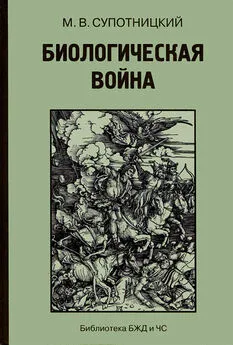
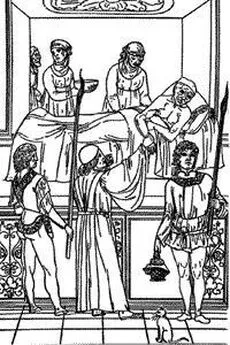

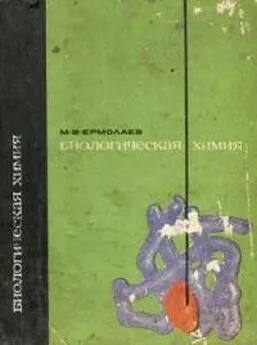

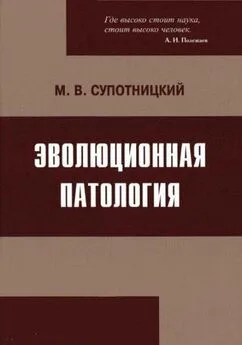
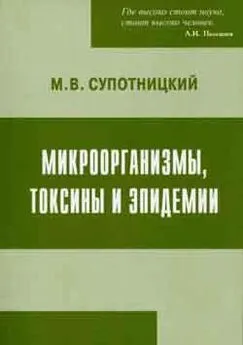
![Михаил Супотницкий - Очерки истории чумы. Книга II. Чума бактериологического периода [без иллюстраций]](/books/1084186/mihail-supotnickij-ocherki-istorii-chumy-kniga-ii.webp)
![Михаил Супотницкий - Очерки истории чумы. Книга I. Чума добактериологического периода [без иллюстраций]](/books/1084187/mihail-supotnickij-ocherki-istorii-chumy-kniga-i-ch.webp)
